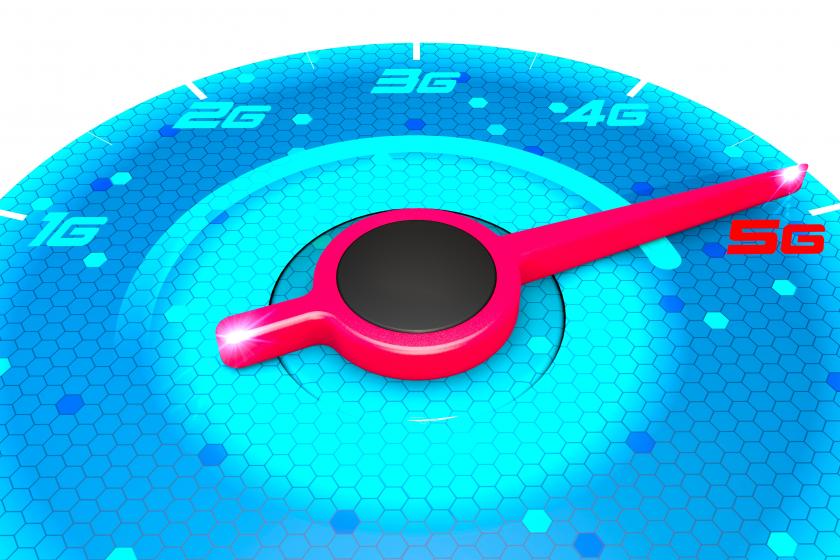Is Your 5G Service Slow? Join the ClubIs Your 5G Service Slow? Join the Club
Median 5G performance is declining globally in many early launch 5G markets. Here is a look at why and what might be done to address the issue.

One of the great promises of 5G over previous wireless services like 4G, LTE, and 3G is its ability to deliver greater bandwidth and lower latency to support video, streaming, and other applications. And while most 5G users are seeing better performance over their older services, current 5G networks are not delivering anywhere near the performance the technology can theoretically deliver. And worse, over the last year, global 5G upload and download times have, on average, declined, according to speed-test data from the network diagnostics company Ookla.
When the technical specifications for the technical performance of 5G were presented by the International Telecommunications Union (ITU) in 2017, the top download speed was specified as 20 gigabits per second (GB/s). Currently, most 5G networks deliver 1 GB/s.
Factors impacting 5G service performance
Many issues are at play impacting 5G performance and the ability of providers to meet ever-changing user bandwidth and latency demands. One immediate issue is that most 5G network operations and service providers rolled out their services by deploying non-standalone 5G networks. Such networks are built on top of existing 4G networks. So, while access points may support high-performance 5G, the backbone carries a mix of traffic from all services.
The network operators opted for this approach because it was less expensive than designing and deploying a standalone 5G network. Another “benefit” (besides lower costs) of taking a non-standalone approach is that network operators could offer customers higher-speed services faster.
Many priced the services to attract new customers and to have existing customers move to new plans. That fueled enormous demand. By the end of 2022, there were 1.15 billion 5G subscribers, a rise of over 530 million from 619 million a year earlier, according to the Global mobile Suppliers Association (GSA). That translates to 85.9% year-on-year growth. The problem is that much of the growth was concentrated in urban areas where 5G services were concentrated. Even with deploying more capacity, performance in many regions was degraded as more users vied for services.
Ookla found that to be the case. Median 5G performance is declining in many early launch 5G markets. “While understandable as 5G adoption grows and users in more remote locations access 5G, declining median download speeds also point to investment and deployment challenges in some markets,” said Mark Giles, Lead Industry Analyst at Ookla. He noted that at the same time, many of these markets are facing economic challenges, placing more emphasis than ever on cost control. So, it is likely buildouts will not necessarily keep pace with demand.
The Ookla testing looked deeper than just examining the median download speed. It examined the top and bottom 10% of sample results. It found “significant variance in the consumer experience on today’s 5G networks, with 5G speeds peaking at over 1 Gbps for the top 10% of users in the U.A.E on average but falling to below 20 Mbps for the lower 10% in Norway, the U.S., Japan, Germany, and Spain.
Slow 5G service driving interest in standalone 5G
Standalone 5G may help improve services globally. Standalone 5G is typically based on a new, cloud-based, virtualized, microservices-based core infrastructure. Some anticipated benefits of introducing standalone 5G technologies include faster connection times, lower latency, support for massive numbers of devices, and higher download speeds. Standalone 5G networks also offer more-agile creation of services and network slicing, with improved support for managing service-level agreements within those slices.
Interest is growing in its use. By the end of March 2023, the GSA identified 524 operators in 156 countries and territories investing in 5G. Of those, 115 operators invested in standalone 5G, with 41 operators having already deployed or launched standalone 5G in their public networks.
Are expectations for 5G speed too high?
It is clear that the ideal or top potential performance for 5G of 20 Gb/s is not in the cards. However, when introducing 5G, the ITU defined target values for the user experienced data rate, a so-called minimum technical performance requirement. They specified a downlink user experienced data rate of 100 Mbit/s and an uplink user experienced data rate of 50 Mbit/s in dense urban environments. The 1 GB/s global average download rate is not bad by those metrics.
Related articles:
Read more about:
5GAbout the Author
You May Also Like




